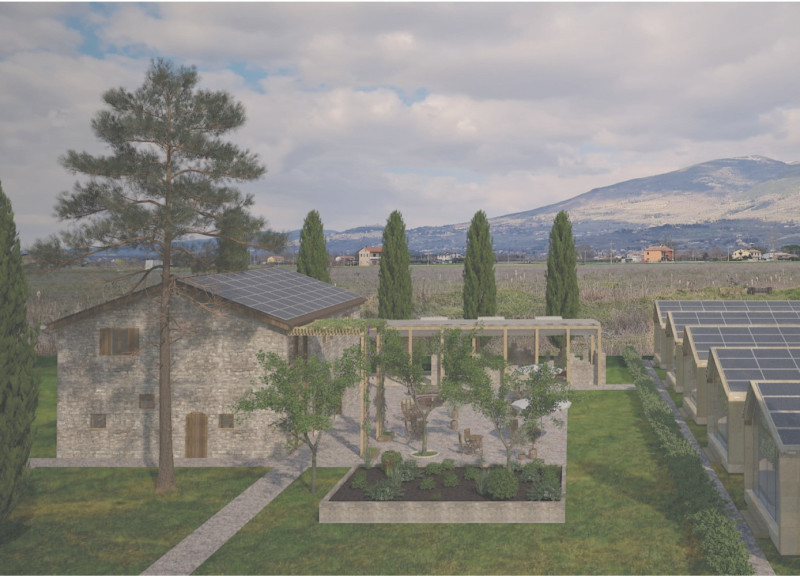5 key facts about this project
Tili Vini is located in the charming region of Umbria, Italy. It serves as both a winery and a destination for wine lovers, aiming to connect visitors with local viticulture. The design draws on the area's rich traditions while incorporating modern principles of sustainability. The goal is to create an environment where guests can enjoy communal spaces alongside private accommodations while experiencing the beauty of the landscape.
Architectural Concept
The overall concept emphasizes a blend of traditional methods and contemporary sustainability. The design transforms the winery into a retreat for wine enthusiasts. This approach creates opportunities for community interactions while maintaining a strong sense of environmental responsibility. Guest houses are arranged to form a central space, encouraging social engagement and fostering connections among visitors.
Materiality and Sustainability
A key element of the design is the reuse of materials from existing structures. This strategy reduces waste and reinforces the relationship between the building and the surrounding land. Local stone and travertine are integrated into the design, providing both durability and a visual connection to the region’s character. By using materials that resonate with its setting, the project aligns itself with local traditions.
Integration of Energy Efficiency
Attention to energy efficiency is evident throughout the design. Photovoltaic elements are incorporated into the roof systems, promoting a reduction in reliance on traditional energy sources. This decision aligns with the increasing importance of sustainable practices in modern architecture. The focus on minimizing the ecological footprint is a priority for the project, contributing to a responsible design approach.
Design Details
Various design details support the goals of functionality and aesthetic coherence. High-pressure cork panels are used on the façade, providing insulation and water resistance. This choice enhances the building's performance without compromising its visual appeal. Additionally, composite wood beams offer a lighter alternative to standard beams, further supporting sustainability efforts by requiring less material. Each detail is carefully considered to create a cohesive environment that respects the local landscape.






















































